A) ![]()
B) ![]()
C) ![]()
D) ![]()
E) ![]()
G) A) and B)
Correct Answer

verified
Correct Answer
verified
Multiple Choice
Find the x- and y-intercepts of the graph of the equation below. 
A) ![]()
B) ![]()
C) ![]()
D) ![]()
E) ![]()
G) A) and D)
Correct Answer

verified
Correct Answer
verified
Multiple Choice
Decide whether the function is even, odd, or neither. 
A) Odd
B) Even
C) Neither even nor odd
E) B) and C)
Correct Answer

verified
Correct Answer
verified
Multiple Choice
Use the graph of  to sketch the graph of
to sketch the graph of 
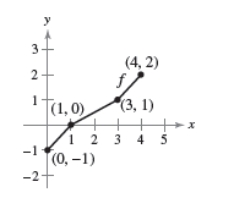
A) Horizontal shift 2 units to the right ![]()
B) Reflection in the x-axis ![]()
C) Vertical shift 2 units upward ![]()
D) Horizontal shift 3 units to the left ![]()
E) Stretching by 2 ![]()
G) A) and D)
Correct Answer

verified
Correct Answer
verified
Multiple Choice
Use the graph of the function to find the domain and range of f. 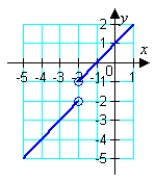
A) ![]()
B) ![]()
C) ![]()
D) ![]()
E) ![]()
G) A) and C)
Correct Answer

verified
Correct Answer
verified
Multiple Choice
Find the slope and y-intercept of the equation of the line. -y - 8x = -2
A) slope: 8; y-intercept: -2
B) slope: -2; y-intercept: 8
C) slope: 8; y-intercept: -1
D) slope: 2; y-intercept: -8
E) slope: -8; y-intercept: 2
G) B) and E)
Correct Answer

verified
Correct Answer
verified
Multiple Choice
Determine whether lines L1 and L2 passing through the pairs of points are parallel, perpendicular, or neither. L1 : (-1, 8) , (9, -4) L2 : (0, 9) , (1, -1)
A) parallel
B) perpendicular
C) neither
E) A) and C)
Correct Answer

verified
Correct Answer
verified
Multiple Choice
Write the equation that expresses the relationship between the variables described below, then use the given data to solve for the variation of constant. "t varies directly as  , and
, and  when
when  "
"
A) ![]() ;
; ![]()
B) ![]() ;
; ![]()
C) ![]() ;
; ![]()
D) ![]() ;
; ![]()
E) ![]() ;
; ![]()
G) B) and C)
Correct Answer

verified
Correct Answer
verified
Multiple Choice
Which set of ordered pairs represents a function from P to Q? P = {5, 10, 15, 20} Q = {-1, 1, 3}
A) {(5, -1) , (10, 1) , (10, 3) , (15, 1) , (20, -1) }
B) {(15, -1) , (15, 1) , (15, 3) }
C) {(15, 1) , (10, -1) , (5, 1) , (10, 3) , (15, -1) }
D) {(10, 1) , (15, 3) , (20, 1) }
E) {(5, 3) , (15, 1) , (5, -1) , (15, 3) }
G) A) and C)
Correct Answer

verified
Correct Answer
verified
Multiple Choice
Match the equation below with its graph.  Graph I :
Graph I : 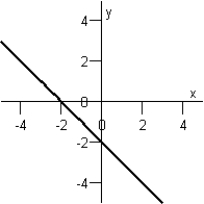 Graph IV :
Graph IV : 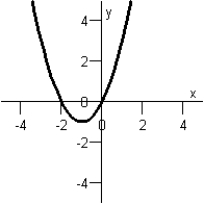 Graph II :
Graph II : 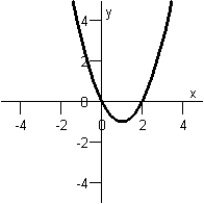 Graph V :
Graph V : 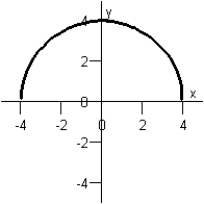 Graph III :
Graph III : 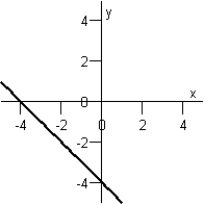
A) Graph IV
B) Graph III
C) Graph V
D) Graph II
E) Graph I
G) C) and D)
Correct Answer

verified
Correct Answer
verified
Multiple Choice
Describe the sequence of transformations from  to
to  Then sketch the graph of
Then sketch the graph of  by hand.Verify with a graphing utility.
by hand.Verify with a graphing utility. 
A) Shifted 5 units downward ![]()
B) Shifted 1 unit upward ![]()
C) Shifted 4 units to the left ![]()
D) Shifts 3 units to the right ![]()
E) 4 units to the left and 2 units upward ![]()
G) A) and C)
Correct Answer

verified
Correct Answer
verified
Multiple Choice
The point  on the graph of
on the graph of  has been shifted to the point
has been shifted to the point  after a rigid transformation.Identify the shift and write the new function
after a rigid transformation.Identify the shift and write the new function  in terms of
in terms of 
A) Shift: shifted 1 unit to the left. ![]()
B) Shift: horizontally 3 units to the left and vertically 2 units downward. ![]()
C) Shift: horizontally 2 units to the right and vertically 1 unit upward. ![]()
D) Shift: horizontally 1 unit to the right and vertically 2 units downward. ![]()
E) Shift: shifted 1 unit upward. ![]()
G) A) and B)
Correct Answer

verified
Correct Answer
verified
Multiple Choice
Describe the sequence of transformation from  to
to  if
if 
A) Shifted five units to the left and six units downwards.
B) Shifted six units to the left and five units downwards.
C) Shifted five units to the right and six units upwards.
D) Shifted six units to the right and five units downwards.
E) Shifted five units to the left and six units upwards.
G) A) and C)
Correct Answer

verified
Correct Answer
verified
Multiple Choice
The inventor of a new game believes that the variable cost of producing the game is $3.65 per unit and the fixed costs are $5000.The inventor sells each game for $11.09.Let  be the number of games sold.Write the average cost per unit
be the number of games sold.Write the average cost per unit  as a function of
as a function of  where
where  is defined as the total cost of producing
is defined as the total cost of producing  games.
games.
A) ![]()
B) ![]()
C) ![]()
D) ![]()
E) ![]()
G) A) and C)
Correct Answer

verified
Correct Answer
verified
Essay
After completing the table, use the resulting solution points to sketch the graph of the equation 

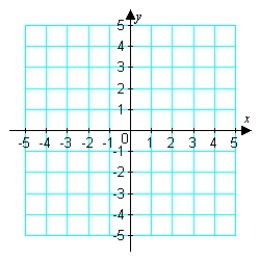
Correct Answer

verified
Correct Answer
verified
Multiple Choice
Find the slope and y-intercept of the equation of the line. 
A) slope: ![]() ; y-intercept: 4
; y-intercept: 4
B) slope: ![]() ; y-intercept: -6
; y-intercept: -6
C) slope: -6; y-intercept: 4
D) slope: 4; y-intercept: -6
E) slope: -6; y-intercept: -4
G) C) and D)
Correct Answer

verified
Correct Answer
verified
Multiple Choice
Plot the points and find the slope of the line passing through the pair of points. (2, -4) , (4, -1) 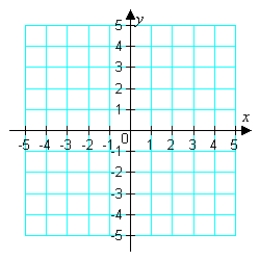
A) slope: ![]()
B) slope: ![]()
C) slope: ![]()
D) slope: ![]()
E) slope: ![]()
G) A) and D)
Correct Answer

verified
Correct Answer
verified
Multiple Choice
Describe the sequence of transformations from  to
to  Then sketch the graph of
Then sketch the graph of  by hand.Verify with a graphing utility.
by hand.Verify with a graphing utility. 
A) Vertical shifts down 3 units ![]()
B) Vertical shifts 2 units upward ![]()
C) Horizontal shift 1 unit to the right ![]()
D) Horizontal shifts 4 units to the left ![]()
E) Vertical shifts 3 units upward ![]()
G) All of the above
Correct Answer

verified
Correct Answer
verified
Multiple Choice
Suppose the average remaining lifetime for women in a given country is given in the following table. 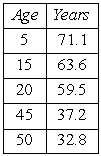 Find the linear regression equation for these data, whose parameters are rounded to the nearest hundredth, where x is the age, in years, and A is the remaining lifetime, in years.Use the regression equation to estimate the remaining lifetime for a 30-year old woman.
Find the linear regression equation for these data, whose parameters are rounded to the nearest hundredth, where x is the age, in years, and A is the remaining lifetime, in years.Use the regression equation to estimate the remaining lifetime for a 30-year old woman.
A) 59.79 years
B) 43.45 years
C) 49.47 years
D) 52.05 years
E) 57.21 years
G) A) and C)
Correct Answer

verified
Correct Answer
verified
Multiple Choice
Assume that y is directly proportional to x.If  and
and  , determine a linear model that relates y and x.
, determine a linear model that relates y and x.
A) ![]()
B) ![]()
C) ![]()
D) ![]()
E) ![]()
G) C) and E)
Correct Answer

verified
Correct Answer
verified
Showing 21 - 40 of 97
Related Exams